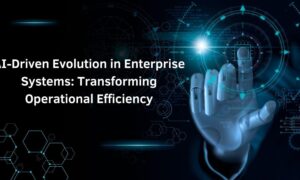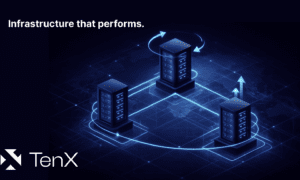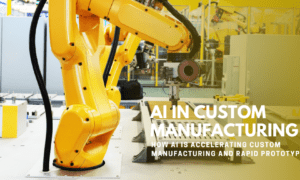Banking is shifting from scripted automation to intelligent decisioning. Traditional Artificial Intelligence (AI) excels at automating tasks and recognizing patterns. But it faces the issue of limited reasoning and veiled context. Plus, it cannot coordinate actions across systems.
Agentic AI changes that.
It can reason, break tasks into steps, and execute end-to-end actions on behalf of the bank. Moreover, it’s an excellent tool for bridging the immediacy gap. After all, 90% of customers expect instant service (G2).
Here’s a look at the role of agentic AI in modern banking. We examine how it merges digital agility with human-like intelligence to redefine customer experience.
Agentic AI: Why Banking Needs It Now
Agentic AI refers to autonomous systems capable of understanding goals, making contextual decisions, and executing actions independently. It is unlike traditional or generative AI, which focuses on producing responses.
Agentic AI plans, reasons, and completes outcomes end-to-end, functioning as an intelligent decision-maker, not just a conversational tool.
Banks need this capability because banking journeys are multi-system by design. Everything, account data, core banking systems, statements, fraud tools, transaction ledgers, and credit models, is connected yet siloed. The result is slow resolution and a disjointed experience.
Agentic AI compresses all this complexity to:
- Accelerate decision-making by synthesizing cross-system data
- Enable proactive service instead of reactive support
- Reduce dependency on human back-and-forth
- Drive contextual personalization based on behavior and history
- Improve accuracy in compliance-heavy actions
- Reduce repeat contact from customers
- Shorten the problem-to-resolution cycle time
- Unlock real-time orchestration across internal systems
Think of Agentic AI as smarter banking automation.
How Agentic AI Elevates Banking Customer Experience
Customer experience is where Agentic AI has the greatest impact. Here’s how Agentic AI transforms CX pain points into opportunities:
- Long Wait Times for Support: Agentic AI completes work end-to-end to compress resolution time to minutes. No more pushing customers across multiple agents or queues.
- Fragmented Answers Across Systems: Agentic AI unifies data into a single interpretation layer. This way, responses are consistent, complete, and aligned.
- Generic Product Pitches: Agentic AI matches customers with the right rate plans, product tiers, or pricing logic based on their financial profile.
- Confusing Statements, Fee Structures, or Charges: Agentic AI explains statements in simplified language and clarifies the “why” behind fees.
- Repeated KYC Submissions: Agentic AI recognizes previously validated identity documents and reuses them within compliance rules.
- Customers Never Get Alerted Before Financial Risk Events: Agentic AI detects risky behavior patterns and proactively prompts alternatives before the customer makes the wrong move.
Operational Efficiency and Risk Management with Agentic AI in Banking
In banking, efficiency isn’t just about speed. It’s about reducing the unit cost of resolution without adding risk exposure.
As per Accenture, Generative AI in banking has the potential to increase productivity by up to 30%. Imagine what’s achievable through Agentic AI. Autonomous decisioning will help banks compress workflows that used to take days into minutes!
Agentic AI can drive efficiency and risk control by:
- Automating identity verification and KYC checks
- Flagging and prioritizing fraud patterns before human screening
- Auto-generating compliance audit trails
- Classifying customer intents instantly
- Creating post-interaction case summaries
- Detecting anomalies in transaction flows
- Pre-validating documentation before approval
- Reducing triaging cycles between back office teams
Agentic AI in banking transforms workflows into self-moving systems.
Challenges and Considerations in Deploying Agentic AI in Banking
Agentic AI is not a plug-and-play technology. It requires a solid foundation paired with deliberate governance.
Here are some challenges banking institutions may anticipate (and how they can overcome them):
| Challenges in Banking AI Adoption | Practical Way Banks Should Respond |
| Data silos block context | Consolidate core banking, CRM, fraud, and payments data into a unified decision layer. This allows AI to reason over the complete journey. |
| Lack of explainability undermines trust | Build explainability into the model layer: generate narrative “reason codes” that justify outcomes for audit, compliance, and CX. |
| Regulations vary and evolve constantly across markets | Encode policies as machine-readable constraints, so AI stays within compliance boundaries automatically, not reactively. |
| Bias can creep into credit, risk, or eligibility models | Run periodic bias evaluations across data, features, outputs, and enforce fairness thresholds as model constraints. |
| Legacy infra makes real-time orchestration almost impossible | Modernize integration via modular APIs and event-driven architecture to enable instantaneous cross-system actions. |
| Teams lack AI operational literacy | Create governance playbooks and train business-side teams to monitor agents, override edge cases, and escalate exceptions. |
| Over-automation can create operational and ethical blind spots | Establish autonomy boundaries. Define where AI can act independently vs. where human approval is mandatory. |
| Historical banking data is often inconsistent or incomplete | Implement data validation, enrichment, and hygiene scoring at ingestion, before AI reasoning pipelines engage. |
The Future of Banking with Agentic AI
Agentic AI shifts banking from reactive support to a fully anticipatory model. Instead of customers initiating requests, systems will detect needs, assess intent, and trigger assistance automatically.
AI agents will coordinate across fraud engines, transaction ledgers, risk models, and communication channels, executing outcomes end-to-end without human agents stitching steps together.
This is how banking becomes intelligent, adaptive, and context-first by design. The future isn’t more workflows or more human intervention; it’s more autonomy.



































